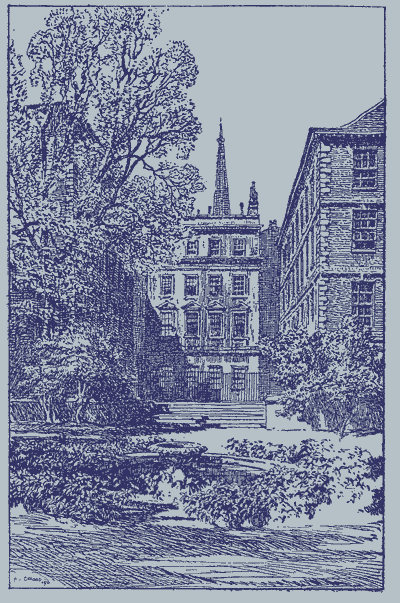|
THE MIDDLE TEMPLE.
Fountains Cort, Middle Temple |
|
Coat of Arms - Argent; on a cross gules a Paschal lamb or, carrying a banner argent charged with a cross gales. Translated—A silver field ; on a red cross a Paschal lamb (gold) carrying a silver banner charged with a red cross. In ancient times, says Pearce, the lamb referred to, symbolizing our sacred Redeemer, was embroidered on cloth, and, after episcopal benediction, was worn by the faithful, with the words of the Evangelist St. John : Agnus Dei qui tollis peccata mundi (The Lamb of God which taketh away the sins of the world). The lamb was also employed in the decoration of churches, and is yet to be met with in many of our provincial and metropolitan churches. In Roman Catholic countries, the Agnus Dei is still very generally worn by the peasantry. This Agnus Del was assumed as one of the appropriate ensigns of the Knights Templars; their bearings being a shield argent, a plain cross gales, and (brochant sur le tout) the holy lamb bearing the banner of the order, surmounted by a red cross : "And on his brest a bloody crosse he bore, The deare remembrance of his dying lord, For whose sweete sake that glorious badge he wore, And dead as living ever him ador'd, Upon his shield the like was also scor'd, For sovereign hope, which in his help he had." " The holy lamb,"
proceeds Pearce, "seems also to have been borne by the Knights
Hospitallers of St. John of Jerusalem, for I find one in the groined
roof of St. John's Gate, Clerkenwell. If this be so, as this order
succeeded the Knights Templars in the possession of their house, at
Temple Bar, and afterwards demised it to the professors and students
of the common law, we have an additional reason why this glorious
badge ' should have been assumed as the armorial ensign of the legal
fraternity on the Temple."
Site Copyright ickledirectory.co.uk. The text was first written in 1910 by an anonymous diarist.
|
